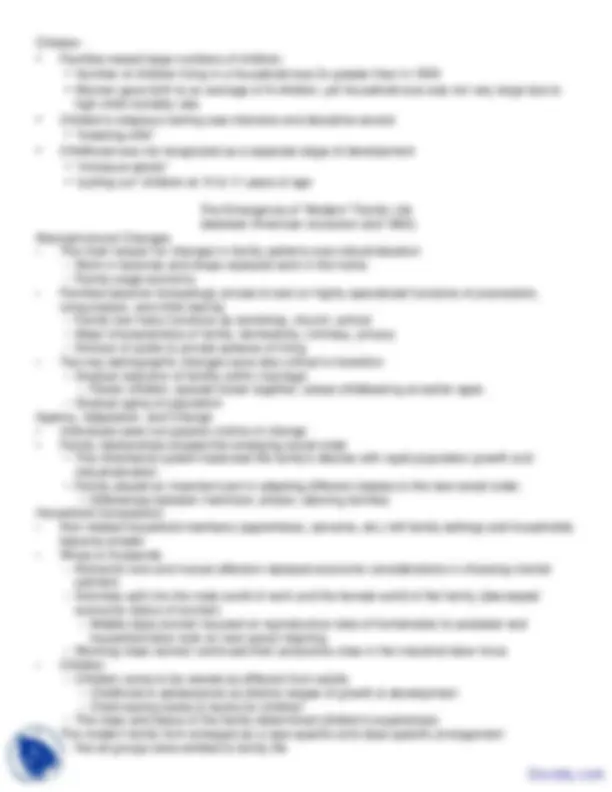
Pre-industrial Families and the Emergence of a Modern Family Form
Family and the New Social History
• Family history is a multidisciplinary field.
• Family history concentrates on the experiences and perceptions of ordinary people, including
previously under-studied groups.
• Social class, ethnicity
• Using research methods such as family reconstitution and aggregate data analysis, family
historians have given us a new picture of family life and social change.
• Family history themes
• Diversity – Broad differences in the U.S. population have made generalizations about “the
family” impossible.
• Native American & Hispanic indigenous peoples; class, gender, region of origin of white
colonists; African slaves
• Uneven Change – Families in different social classes, races, and immigrant groups all
experienced different rates of change.
• Human Agency – Families are active agents rather than passive victims of change.
• Use cultural heritage in adapting to social change
Family Life in Colonial America
Macrostructural Conditions
• “Godly family” – patriarchal institution
• Very little distinction between family & society
• Boundaries between home & community almost nonexistent
• Family life characterized by family-based economy
• Almost all production was done in the household
• All family members worked at tasks defined by age & sex
• Family performed many social functions
• School, vocational institute, church, house of correction, welfare institution
• Family matters were not considered private
• Charivari
• Integration of family & society persisted through 18th century
Household Composition
• Families were typically nuclear in structure
• Often included non-related household members (servants, boarders, apprentices)
• Families tended to be larger than contemporary families but smaller than the stereotypical
portrayal
• Disagreement among scholars regarding number of children per family
Wives & Husbands
• Unquestionable principle of patriarchy
• Marriages were arranged based on the social and economic purposes of larger kin groups
• Romantic love was not absent, but marriage was more of a contractual agreement
• Marriage across social class boundaries was unacceptable
• A shortage of women enhanced the status of women
• Women’s work was essential part of colonial economy
• Vital economic role gave them important position in colonial families & communities
• Great majority worked in family setting
• Women who worked outside the home were excluded from roles that yielded the most power &
privilege










